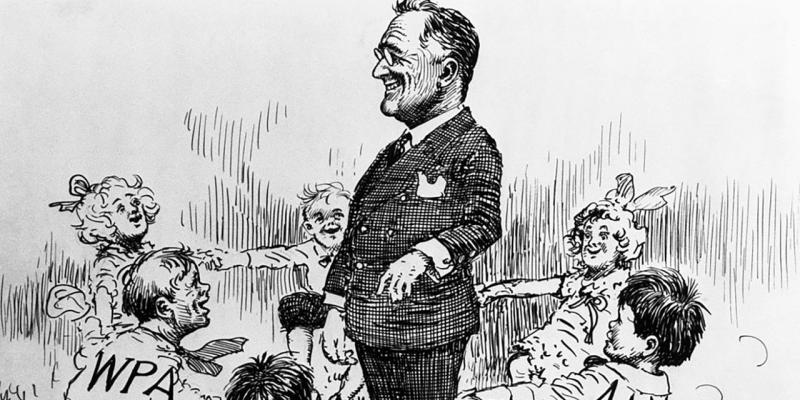Politics: Timothy Shenk's 'Realigners'
By: Barton Swaim (WSJ)



Timothy Shenk, a professor of history at George Washington University, is a man of the left. He is a socialist and co-editor of the left-wing magazine Dissent. Seeing the word "democracy" in the subtitle of his book, "Realigners: Partisan Hacks, Political Visionaries, and the Struggle to Rule American Democracy," I anticipated a tendentious polemic about the American right's assault on democracy and embrace of white supremacy and authoritarianism.
I was wrong. Mr. Shenk's book is fair in its criticisms, vividly written, impressively researched, and—best of all—delightfully out of step with present-day liberal orthodoxy.
Now, about that orthodoxy. When commentators and scholars on the left talk about “democracy,” they are generally not referring to a system of constitutional government in which the winners of elections form majorities to enact the changes they campaigned on. Since the Progressive Era of the early 20th century—and especially since the election of Barack Obama in 2008—the word “democracy,” on the left, has come to signify leftist policy aims: welfare-state expansions, new rights for marginalized identities, and regulations handed down by expert-run bureaucracies. Indeed, much of today’s left, especially among the young and members of the press corps, actively distrusts democracy in the older sense. As they see it, the Senate is rigged; Republicans win in the House by gerrymandering; the Supreme Court is illegitimate if it allows state electors to make their own decisions; presidents can change immigration law and cancel private debt without legislative authority; and laws passed by transnational bodies are binding.
On political questions, Mr. Shenk is a realist. Even if you believe that the unique threat of “antidemocratic forces” requires “a fundamental overhaul of the political system,” he writes, “the path to reform starts with building a majority under the current rules of the game. Because you can’t save democracy without first winning some elections.” (Italics mine.)
What follows are nine discursive but highly readable chapters on the politicos and intellectuals who have envisioned ways of building coalitions to achieve their ends. The book’s aim, as Mr. Shenk hints along the way, is to shed light on the question: Why are durable coalitions all but impossible to form in 21st-century American politics? “Polarization” is the easy one-word answer, but a study of coalition-building from the 1780s forward may, Mr. Shenk contends, show us the way back to a more practical and healthy political life.
Statesmen of the early republic had to accommodate themselves to the whole idea of parties, which they generally thought intrinsically bad. “Neither Republicans nor Federalists,” Mr. Shenk writes—the party of Thomas Jefferson and James Madison, on the one hand, and that of Alexander Hamilton and John Adams, on the other—“accepted that the other side had a right to exist. They were parties against parties, cures for the temporary insanity that had overtaken the country.” They soon learned how to use temporary alliances to achieve limited aims—Madison was especially adept at cobbling together part-time allies and former enemies to defeat the Federalists. Coalition-building is a skill that can be learned.
The book’s second half includes alternately admiring and scathing portraits of the radical intellectual and civil-rights campaigner W.E.B. Du Bois, the Olympian columnist Walter Lippmann, the insurgent anti-feminist Phyllis Schlafly and Mr. Obama. These chapters are meant to chronicle the collapse of the New Deal coalition—a loose alliance between labor unions, black Americans, Southern whites and the intelligentsia—and the rise of activist-driven politics in which machines have little power and each party survives by anathematizing the other.
Mr. Shenk, though in his 30s, writes from the perspective of an older socialism in which class was more important than race or sexual identity and in which one could support the nationalization of industries and express patriotism without irony. Accordingly he laments the Democratic Party’s transformation into a tenuous partnership between low-income minorities and highly educated metropolitan elites. Under President Lyndon Johnson, he writes with sadness, “Democrats had lost their grip on the Deep South; under Obama, Appalachia slipped away; in 2016, it was the Rust Belt.”
I admire Mr. Shenk’s intellectual honesty here. Other writers on the left blame the Democrats’ loss of the South on the penchant of Republicans, which for some reason they only developed in the 1970s, for subtle racial signaling (Ronald Reagan once used the phrase “states’ rights” in Mississippi—the horror!). Mr. Shenk explains that Democratic presidents from FDR to Johnson were deliberately soft on segregation—and, in the case of FDR, on lynching—because they needed Southern votes in Congress. Mr. Shenk’s clear-sighted understanding that coalition-building can be an ugly business is a refreshing departure from the left’s habit of attributing every postwar GOP victory to some form of bigotry and counting every Democratic one as a triumph of reason and compassion.
He is mistaken, however, to believe that the fracturing of the New Deal coalition is the reason for our present political stalemate. The idea is that President Bill Clinton and Mr. Obama, however liberal in other respects, made peace with the Reaganesque supply-side worldview in which taxes would never again rise to pre-1981 levels and thus never again pay for New Deal-level welfare spending. Hence the defection to the GOP of white working-class voters, who in Mr. Shenk’s analysis might have been kept in the Democratic fold with subsidies and welfare checks but were scared into the GOP by culture-war mercenaries.
The opposite is closer to the truth. The reason for America’s polarized paralysis is the New Deal itself, together with its outgrowth, LBJ’s Great Society. The New Deal coalition was not like the other long-lived coalitions—Van Buren’s Jacksonians, McKinley’s Republicans—described in “Realigners.” Those earlier coalitions were based on government policies on trade, regulation, foreign relations and defense; FDR’s coalition was based on straight-up government largess—who got what goodies. The War on Poverty expanded the New Deal’s logic. Subsidies created partners.
The problem is that the Great Society didn’t work. There was a War on Poverty, and poverty won. After more than half a century, African-Americans haven’t achieved anything like economic parity with whites. Why is this? The answer cannot be that the welfare state was underfunded by tax cuts—the government spent the money anyway, as our $31 trillion debt attests. The cold reality is that American voters, given the choice between slow-growth social democracy and a robust free-market economy, chose the latter in 1980 and all subsequent elections. Mr. Shenk will dislike that choice, but his side hasn’t won enough elections.




